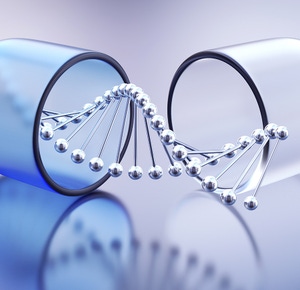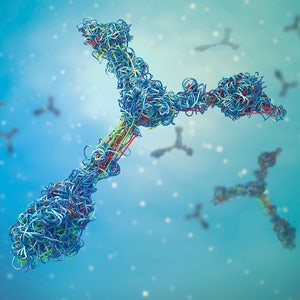GPCR Cell Lines
From GPCR cell lines to luciferase-labeled tumor cells for in vivo imaging studies, to engineered cells we offer a wide range of cell lines designed to fit your research and development needs.
GPCR cell lines: Over 300 stable GPCR cells lines for binding and functional testing and over 130 cells lines for calcium testing
- AequoScreen® cell lines are doubly transfected to co-express both Aequorin and a variety of GPCRs for calcium flux assays
- ValiScreen® cell lines express a variety of different GPCRs
- PhotoScreen® cell lines include photoprotein kinetic luminescence technology for measuring calcium flux in cells
Luciferase-labeled tumor cell lines: IVISbrite™ bioluminescent tumor cells, for in vivo imaging, are labeled with red-shifted luciferase that offer a brighter signal
Engineered cell lines: With over 7,500 ‘ready-to-go’ cell lines to custom services, Horizon Discovery has the expertise to provide unrivaled cell line engineering solutions


Tag-lite® binding assays
Revvity's Tag-lite binding assays offer straightforward add-and-read protocols to help you characterize the binding properties of compounds, regardless of their chemical structures (peptides, small or complex molecules), or pharmacological properties (agonist, antagonist, or inverse agonist).
Revvity's Tag-lite binding assays offer straightforward add-and-read protocols to help you characterize the binding properties of compounds, regardless of their chemical structures (peptides, small or complex molecules), or pharmacological properties (agonist, antagonist, or inverse agonist).
Featured resources


Filters
1 - 9 of 9 Resources
cAMP AlphaScreen assay: a method for the pharmacological characterization and screening of Gαi coupled receptors in whole cells
G protein-coupled receptors (GPCRs) are a large family of transmembrane receptors that are significant drug targets. They function as enzymes that activate G-proteins. GPCRs couple to three main families of Gα subunits: Gαi/o, Gαs, and Gαq. The coupling specificity depends on the GPCR and its cellular environment. Gαs and Gαi subunits operate through the cAMP pathway, either activating or inhibiting adenylate cyclase, which converts ATP to cAMP. In this application note, the AlphaScreen™-based cAMP detection technology has been used to study Gαi-coupled receptors, specifically the 5-hydroxytryptamine-1A (5-HT1A) serotonergic receptor. The note demonstrates the utility of the AlphaScreen-based cAMP Assay kit for the pharmacological characterization and potential high-throughput screening of Gαi-coupled receptors.
cAMP assay provides flexibility and stable pharmacology
G protein-coupled receptors (GPCRs) play a crucial role in various cellular and physiological processes, including cell proliferation, differentiation, neurotransmission, development, and apoptosis. GPCR activity is commonly assessed by measuring levels of intracellular cAMP upon stimulation by agonists. Abnormal GPCR activity is associated with many diseases, including cancer, making GPCRs an important class of pharmaceutical drug targets. Multiple assay formats have been developed to measure the level of cAMP generated, which can determine the pharmacological potency of different agonists and antagonists. The ideal assay is homogeneous, non-radioactive, and allows for sensitive and reproducible detection. AlphaScreen ™ technology provides a quantitative detection of molecules in a homogeneous, no-wash format and can be applied to GPCR research. Download this application note to learn more on the cAMP AlphaScreen assay: Detailed protocol, Data illustrated by graph and tables, Dynamic range description and validation.
Characterizing chemokine receptor inhibitors with AlphaLISA SureFire Ultra, Alpha SureFire Ultra Multiplex and LANCE Ultra cAMP assays
The measurement of protein phosphorylation is a useful tool for measuring the modulation of receptor activation by both antibodies and small molecules. CCR7 and CXCR2 receptors, which are expressed in immune cells and are therapeutic targets for disorders like lupus erythematosus, adult leukemia, lymphomas, chronic obstructive pulmonary disease (COPD), and sepsis. AlphaLISA ™ SureFire ® Ultra ™ and Alpha SureFire ® Ultra ™ Multiplex assays are automation-friendly, applicable to both small and large-scale screens, and can assess phosphorylation status in complex matrices. The LANCE Ultra cAMP assay is measures cyclic AMP (cAMP) produced upon modulation of adenylyl cyclase activity by G-protein coupled receptors (GPCRs). This application note demonstrates how the SureFire Ultra and LANCE Ultra cAMP assays can be used for measuring inhibitors to CCR7 and CXCR2 cell surface receptors using a cellular model system where these receptors are overexpressed in CHO cells. The assays were optimized to measure receptor blockage and assayed receptor activity modulation by detecting ERK and AKT phosphorylation status and cAMP modulation. For more details, download the application note!
Functional GPCR Studies Using AlphaScreen cAMP Detection Kit
G protein-coupled receptors (GPCRs) are cell surface transmembrane receptors that activate G-proteins. GPCR activity is often assessed by measuring intracellular cAMP levels upon stimulation by agonists. Since GPCRs are important pharmaceutical drug targets, there’s a high demand for methods to detect and quantify cAMP. The ideal assay is homogenous, non-radioactive, and allows for sensitive and reproducible detection of cAMP. The AlphaScreen™ cAMP assay is one such method. It was evaluated for its ability to detect agonist or antagonist-induced cAMP responses in cells expressing either endogenous or recombinant receptors. Read this application note to access detailed data and results on GPCR studies using AlphaScreen cAMP detection kit.
GPCRs: the pathway to discovery
G protein coupled-receptors (GPCRs) are one of the most intensively studied drug targets, with up to one-third of all marketed therapeutics acting by binding to GPCRs. Therapies that target GPCRs include both agonist and antagonists that are used in the treatment of disease in nearly every major organ system and hold significance in several therapeutic areas, such as cardiovascular diseases, neurosciences, respiratory diseases, metabolic disorders, oncology, and rare diseases. We know the importance of furthering GPCR research - and we answer the call with application notes, white papers, and end-to-end solutions including reagents, instruments, and tools for all aspects of research into today’s most promising drug target. For research use only. Not for use in diagnostic procedures.
Key signaling pathways in liquid cancer: therapeutic targets, screening tools, and future developments
Liquid tumors, which occur in the blood, bone marrow, or lymph nodes, are categorized into three main types of cancer: leukemia, lymphoma, and myeloma. Unlike solid tumors such as carcinomas and sarcomas, these cancers do not form solid masses, leading to different diagnosis and treatment approaches. Leukemia and lymphoma, both forms of blood cancer, affect the body differently. Leukemia primarily impacts the blood and bone marrow, while lymphomas mainly affect the lymph nodes. Significant progress has been made in developing new treatments for both cancers, often targeting the signaling pathways that are constantly activated in specific cancer types. This review highlights some of these signaling pathways and demonstrates how assays based on HTRF and AlphaLISA technologies can be used in the screening and development of new therapies for leukemia and lymphoma treatment.
LANCE Ultra cAMP: a new TR-FRET cAMP assay for Gs - and Gi-coupled receptors.
We have developed a second-generation LANCE® time-resolved fluorescence resonance energy transfer (TR-FRET) immunoassay designed to measure cAMP produced upon modulation of adenylyl cyclase activity by activated GPCRs
Measuring Performance of an Automated and Miniaturized LANCE Ultra cAMP Assay for the Gi-coupled 5-HT1A Receptor- a Comparative Study
In this note we describe the miniaturization of a LANCE Ultra cAMP assay from 384-to 1,536-well plate format for the identification and characterization of agonists and antagonists of a Gi-coupled GPCR.
Radioligand selection guide
Discover a comprehensive collection of GPCR cell lines, membrane preparations, and complementary radioligands designed to drive your GPCR research. Utilize this selection guide to easily identify: Cell lines available for specific receptors Assays that cell lines are validated for Corresponding complementary radioligands and their pharmacological action Learn more about the tools to support your research in this guide!





































